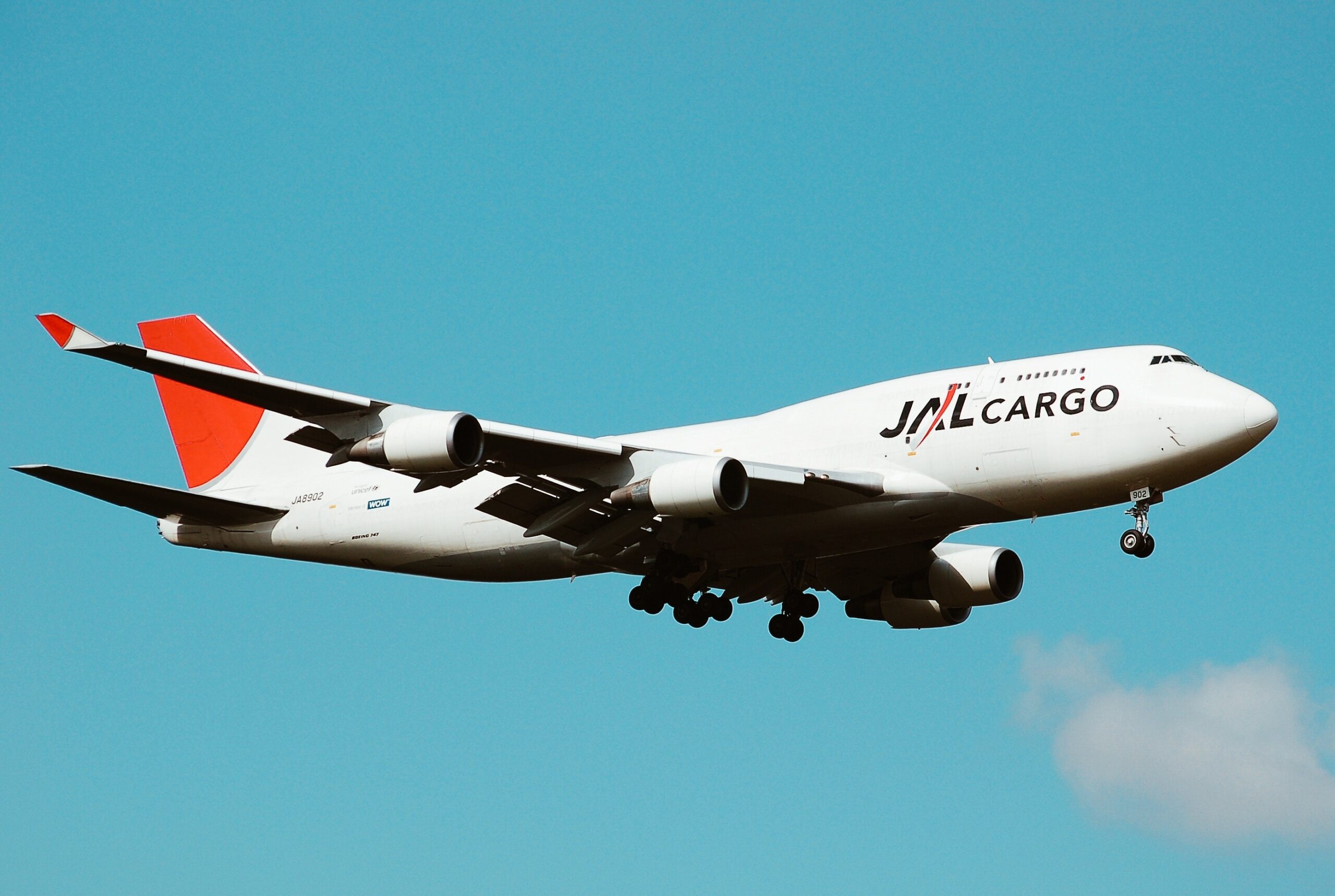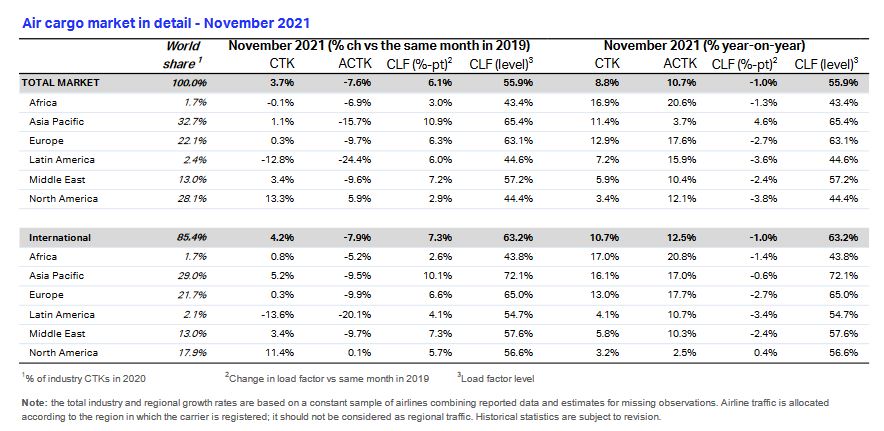Air cargo growth slowed in November as supply chain issues affected demand, according to airline association IATA.
The group’s latest figures show that air cargo demand in cargo tonne km (CTK) terms in November increased by 3.7% compared with 2019 levels (used to mitigate the impact of Covid).
IATA said that this growth percentage was “significantly lower” than the 8.2% registered in October and the 6.7% increase over the first 11 months of the year.
“Supply chain disruptions and capacity constraints impacted demand, despite economic conditions remaining favorable for the sector,” the association said.
IATA highlighted labour shortages due to employees being in quarantine, insufficient storage space at some airports and processing backlogs exacerbated by the year-end rush.
Meanwhile, demand indicators remain positive, with retail sales in the US and China strong, trade and industrial production figures continuing to beat 2019 levels and inventory levels low.
IATA added that a surge in Covid cases was driving PPE demand.
Cargo load factors for the month stood at 55.9% – a 6.1 percentage point increase on 2019 – as capacity was down by 7.6% on two years earlier.
IATA director general Willie Walsh said: “Air cargo growth was halved in November compared to October because of supply chain disruptions.
“All economic indicators pointed towards continued strong demand, but the pressures of labour shortages and constraints across the logistics system unexpectedly resulted in lost growth opportunities.
“Manufacturers, for example, were unable to get vital goods to where they were needed, including PPE.
“Governments must act quickly to relieve pressure on global supply chains before it permanently dents the shape of the economic recovery from Covid-19.”
IATA is calling on governments to: ensure that air crew operations are not hindered by Covid-19 restrictions designed for air travellers; implement the commitments governments made at the ICAO High Level Conference on Covid-19 to restore international connectivity; and provide innovative policy incentives to address labour shortages where they exist.
Looking at regional performance, Asia Pacific airlines saw cargo increase by 1.1% in November compared with two years earlier.
North American carriers’ demand was up 13.3%, although this was down on 20.3% in October, as congestion at hubs affected growth.
European carriers registered a 0.3% increase in demand due to supply chain congestion and localised capacity constraints.
Middle East-based airlines saw cargo demand increase by 3.4%, although this was also a “significant drop” on previous months performance.
In Latin America, carriers saw demand drop by 12.8% on 2019, also a deterioration compared with October. Finally, African airlines noted a 0.1% decline, another drop on October.




